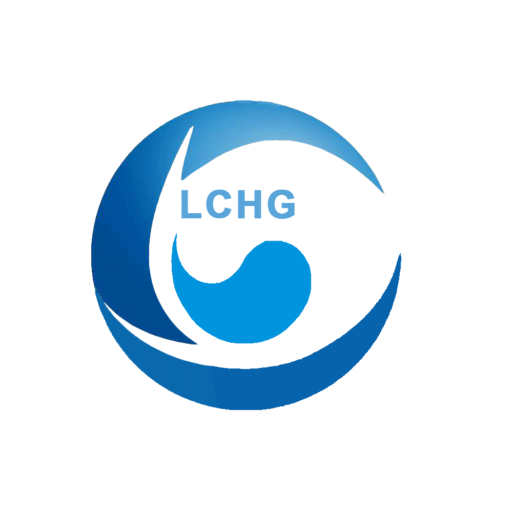超细粉末涂料用丙烯酸树脂的制备和应用
制备了聚丙烯酸酯树脂及其超细粉末涂料,采用红外光谱、热重分析、差损扫描量热等方法对聚丙烯酸酯树脂的结构进行了表征,对制备的粉末涂料和涂膜的性能进行了测试,考察了超细粉末涂料的粉碎性、带电性、流动性、储存稳定性和施工性能,并展望了超细粉末涂料的应用前景。
1、简介
随着环境问题的日益严重,绿色涂料越来越受到人们的关注和重视。粉末涂料是一种新型的无溶剂 100% 固体粉末涂料,以其低污染、高效率、性能优异、节约能源和资源、粉末可回收等特点,引起了世界各国的广泛关注。
其中,丙烯酸树脂基粉末涂料属于低毒性产品,具有一系列优点:装饰性优异、耐户外风化、耐老化、耐腐蚀和耐污染、表面硬度高、柔韧性好,目前已广泛应用于汽车家电等领域,未来丙烯酸粉末涂料将成为汽车装饰面漆的主要品种之一。
超细粉末涂料由于粒径及其分布与普通粉末涂料的性能差异和特殊性,如涂料具有涂层薄、表面平整度和光泽度好等特点,可达到与液体涂料相似的效果,使得超细粉末涂料能够满足对粉末涂料更为严格的要求,为粉末涂料在各个领域的推广和应用进一步拓展了发展空间。
丙烯酸超细粉末涂料性能优异,将具有良好的发展前景和巨大的市场需求,因此,研究丙烯酸超细粉末涂料意义重大。
2、实验部分
2.1 实验原材料
甲基丙烯酸甲酯 (MMA)、甲基丙烯酸丁酯 (BMA)、甲基丙烯酸缩水甘油酯 (GMA)、 甲基丙烯酸环己酯 (CHMA)甲基丙烯酸异冰片酯 (IBOMA)、偶氮二异丁腈 (AIBN) 和十二烷二酸 (DDDA) 均为分析纯;苯和甲苯为化学纯。
2.2 丙烯酸树脂的合成
在本实验中,丙烯酸树脂是通过均相溶液聚合法合成的。聚合前,通过减压蒸馏从聚合阻断剂中去除所有单体。将甲基丙烯酸甲酯 (MMA)、甲基丙烯酸丁酯 (BMA)、甲基丙烯酸缩水甘油酯 (GMA)、甲基丙烯酸环己酯 (CHMA) 和甲基丙烯酸异冰片酯 (IBOMA) 混合,倒出一小部分单体混合物留作后续使用;将引发剂偶氮二异丁腈 (AIBN) 加入剩余的单体混合物中,搅拌至完全溶解。
在四颈烧瓶中加入甲苯,加热至 80°C,恒温回流 0.5 小时。通入 N2 进行保护,滴加引发剂单体混合物 2 小时,保持反应 0.5 小时。再滴加剩余单体混合物 0.5h,滴加完毕,保温反应 1.5110 反应结束,得到含甲苯的聚丙烯酸酯树脂溶液。
将上述产品趁热倒入单瓶中,用旋转蒸发仪在 80℃/0.098MPa的真空度下基本蒸发掉所有溶剂,将聚丙烯酸酯树脂倒在盘子表面,置于真空干燥箱中干燥 24h 即可得到洁净的白色聚丙烯酸酯树脂。
2.3 超细粉末涂层的制备
超细粉末涂料的制备需要采用超细研磨分级系统,所用设备有ACM325超细磨粉机、SCX400超细分级机、高效旋风除尘器、脉冲布袋除尘器和离心风机。超细丙烯酸粉末涂料的制备步骤如下:
(1) 将聚丙烯酸酯树脂初步粉碎;
(2) 预混合聚丙烯酸酯树脂、十二烷二酸(DDDA)、匀染剂和其他添加剂;
(3) 混合材料在双螺杆挤压机中熔化并挤出;
(4) 冷却后,挤出的薄膜与 A1203 在破碎机中进行破碎和混合;
(5) 第二次挤压上述材料并压片;
(6) 在超细研磨系统中加入 0.5%、3% A1203 进行破碎和分级;
2.4 涂层制备
用丙酮对基材表面进行脱脂处理后,用砂纸除锈并擦拭干净,然后放入鼓风烘箱中烘烤 2 分钟。然后,采用静电喷涂工艺和设备制备丙烯酸超细粉末涂料。将预处理好的样板放入喷粉柜中,用电晕放电静电喷枪进行喷涂,喷涂后保持样板垂直,放入鼓风干燥箱中固化,然后在室温下放置 24h 进行性能测试。
2.5 结构特性和性能测试
(1) 树脂的结构特征
红外光谱(IR)用于定性分析和识别分子中可能含有的官能团和化学键,并定量确定其数量。试样的制备采用压片法,即在玛瑙研钵中将少量树脂样品研磨成细粉,并与溴化钾干粉充分混合,然后装入模具中压片,再在红外光谱仪上扫描,收集红外光谱。
(2) 树脂性能测试
玻璃转化温度 (Tg)
当发生玻璃化转变时,聚丙烯酸酯树脂的性质会发生突变。差示扫描量热法(DSC)是一种表征玻璃化转变温度随温度升高和热流变化而变化的方法。本实验采用 DSC 法测定树脂的玻璃化转变温度,使用的热分析仪为美国公司的 DS02910 系列产品,测试条件如下表所示。
图片
热稳定性
热重分析(TG)是一种测量物质的质量随温度(或时间)变化的方法,它通过聚合物链受热后因氧化、侧基分解、主链断裂或结构变化引起的质量变化来反映聚合物的热稳定性。本实验采用 TA-2000 系列热重分析仪分析聚合物的热稳定性,测试条件如下:扫描温度范围为 25~600℃,加热速率为 10℃/分钟。
(3) 超细粉末涂料的可碾碎性测试
粉末涂料的粒度由英国马尔文公司的 MS2000 激光粒度分析仪进行分析,确定产品的平均粒度小于 15 和小于 30。
(4) 涂膜性能测试
外观:目测;机械性能:铅笔法测量硬度,漆膜划线试验测量附着力,漆膜弯曲试验(圆柱轴)测量柔韧性,漆膜冲击试验机测量抗冲击性。
3、结果与讨论
3.1 丙烯酸树脂的合成
(1) 选择聚合方法
粉末涂料用丙烯酸树脂的分子量分布应尽可能窄,而悬浮聚合或乳液聚合合成的树脂分子量较大,分子量分布较宽,同时树脂中会残留水溶性物质,如:分散剂、乳化剂、稳定剂等,微量杂质会影响树脂的性能,导致无法达到粉末涂料的高质量要求,因此这两种方法较少使用。
虽然无需去除溶剂,但聚合体系会随着反应的进行变得越来越粘稠,反应过程中会释放出大量热量,容易发生剧烈聚合,反应过程难以控制。
丙烯酸树脂的合成主要采用自由基聚合法,与四大自由基聚合法相比,由于溶液聚合反应在回流温度下进行,并有氮气保护,反应过程中的搅拌和溶剂回流会带走反应产生的热量,可有效避免局部温度过高甚至剧烈聚合,故反应温度易于控制,反应转化率较高,体系较稳定,聚合物分子量易于控制。聚合物的分子量易于控制。虽然溶液聚合法所用的溶剂一般都有毒,但去除溶剂比较容易,所以本论文的树脂合成方法是溶液聚合法。
(2) 选择共聚单体
丙烯酸树脂一般采用五元共聚法合成,需要硬单体、软单体、交联剂一起在一定温度下交联聚合。可用作合成丙烯酸树脂原料的单体种类很多,每种单体对树脂的性能都有不同的影响。可以通过选择单体的种类和调整单体之间的比例来改变树脂的玻璃化温度,从而改善树脂的破碎性能和抗结块性能,并提高涂层的流平性。
因此,为了确保目标树脂的综合性能达到预期效果,综合考虑各种单体对树脂性能的影响,以及不同类型单体的配比对树脂玻璃化转变温度的影响,本文选择 MMA 作为硬单体,BMA 作为软单体,GMA 作为交联单体,将环氧基团引入树脂中,并选择 IBOMA 降低聚合物的粘度。
(3) 启动剂的选择和用量
聚丙烯酸酯树脂合成常用的引发剂有偶氮二异丁腈(AIBN)和过氧化苯甲酰(BPO)。其中,BPO 的正常使用温度为 70、100 ℃,AIBN 的使用温度为 60、80 ℃。在合成丙烯酸树脂时,首选 AIBN 的原因如下:
BPO易发生诱导分解反应,初级自由基易捕获大分子链上的氢、氯等原子或基团,进而在大分子链上引入支链,使分子量分布更宽;AIBN分解产生的自由基的活性比BPO小,一般不发生诱导分解反应,因此得到的聚合物分子量分布较窄;
苯甲酰基分解为高活性苯自由基引发聚合,聚合物端基户外耐久性差,涂膜长时间会发黄;而 AIBN 引发的聚合物端基是 (CH3)3C-,户外耐久性好;
③ BPO 分解产生的两个自由基 C6H5C00- 和 C6H5 会发生偶联反应,使大部分引发剂失活,降低引发剂的效率。
④ 在 60、100 ℃ 时,AIBN 的半衰期比 BPO 短,说明反应速率高,过氧化物残留会导致树脂氧化变黄。
引发剂的用量也很关键。用量过少,导致聚合物分子量过大,树脂熔体粘度过高,加工性能不好,基于树脂的涂膜流平性差,形成的涂膜容易出现桔皮现象;引发剂用量过大,聚合物分子量小,虽然易于加工,但涂膜的机械性能和抗冲击性能变差。
(4) 溶剂的选择
AIBN 不会诱发分解反应,因此溶剂对引发剂的分解率很小。因此,只有溶剂的沸点和链转移能力对分子量及其分布产生影响。合成丙烯酸树脂常用的溶剂有苯、甲苯、二甲苯和醋酸丁酯等,而二甲苯的毒性和成本较高,所以选择苯和甲苯作为混合溶剂。其中,苯的沸点为 80℃,起回流作用,而甲苯则起链转移作用。
树脂的玻璃化温度(Tg)直接关系到粉末涂料的贮存稳定性,Tg越高,贮存稳定性越好,但Tg过高会使粉末涂料的加工性能以及流平性下降,因此需要适当调整粉末涂料用树脂的Tg,粉末涂料用聚丙烯酸酯树脂的Tg一般在40-100℃之间,较优化的范围为40-60℃。共聚物的玻璃化温度可以通过 Fox 方程对聚丙烯酸酯树脂的 Tg 进行初步设计,从而更好地指导实验。
3.2 超细粉末涂料的性能分析
(1) 粉碎性
超细粉末涂料与普通粉末涂料的生产工艺相似,主要包括原料预混、熔融挤出、冷却破碎、细碎分级过筛、产品包装等工序。只是在粉碎分级的程度和助流剂的选择上有所不同。
实验结果表明,粉末涂料粒径小于 15μm 的占 80% 以上,小于 30m 的占 90% 以上,平均粒径更小,在 10μm 以下。这表明该系统对丙烯酸粉末的破碎和分级效果较好,达到了超细水平。这也表明,带内部分级的 ACM 反击式粉碎机和 SCX 超细分级机在制备超细粉末的粉碎和分级新工艺路线上是可行的。经过超细粉碎、粗分级和细分级等多道工序后,该超细粉碎和分级系统能很好地满足产品对粒度和产量的要求。
(2) 流体化
超细粉体涂料粒径小,颗粒本身质量减小,相对表面积增大,颗粒间作用力(主要是范德华力)大大增强,极易形成团聚。在静电喷涂过程中进入流态化问题造成困难,容易堵塞管道,储存稳定性不好,团聚导致粒径增大而失去超细粉末的优良性能。因此,有必要解决超细粉体的流态化问题,以消除超细粉体推广应用的局限性。
根据目前的文献,改善超细粉体流态化的主要方法是在主要超细粉体中引入一些比超细粉体本身小得多的客体颗粒作为助流剂,以改变超细粉体颗粒之间的相互作用力,使超细粉体易于分散,起到改善流态化的作用。
常见的助流剂包括氧化铝、氢氧化铝、氧化钙、二氧化硅、氧化锌、氧化错、三氧化二铂、二氧化钛、二氧化饰物、三氧化钨和硅酸铝,其中至少两种物质的组合将改善超细粉末涂层的流化特性。因此,有必要选择添加的纳米助流剂的类型、粒度和添加比例。助流剂的添加量不能过多,否则会影响涂层性能,助流剂的类型也会对涂层的流化效果和其他性能产生影响。
通过比较,发现A1203的效果最好,因此选择A1203作为助流剂。在超细粉体涂料的生产中,在粉碎过程中加入 0.5%、3% 的纳米颗粒 A1203,使得超细粉体的流化性能良好,并提高了储存稳定性。
(3) 收费
超细粉质量小导致不易上粉,为了提高上粉率,理论上应加入一些电化剂。但在实践中发现,低上粉率可以提高喷涂的选择性,即喷涂上的颗粒粒径相近,获得的涂层厚度更均匀。
普通粗粉回收粉中细粉含量高,反复使用会出现抱粉、吐粉等流态化问题,通常需要将回收粉与新粉按一定比例混合。超细粉解决了流化问题,即使粒度过细,回收粉也能正常使用。粉末涂料粉末喷涂后可回收再利用,且出粉率好,普通粗粉的出粉率可达 95% 以上,超细粉末涂料的出粉率可达 98% 以上,避免了资源浪费。
(4) 施工业绩
涂层和薄膜的综合性能测试结果对比如下表所示。
图片
从上表可以看出:
外观:超细粉形成的涂膜表面长波远低于普通粗粉,很大程度上消除了粉末涂料固有的桔皮现象。普通粉末涂料形成的涂膜表面不够平整,而超细粉末涂料形成的涂膜表面光泽度要高得多,可以满足较高的装饰要求。
机械性能:细粉末的薄涂层和粗粉末的厚涂层在附着力、耐腐蚀性等方面具有相同的效果。细粉形成的薄涂层具有更好的铅笔硬度和抗冲击性。在相同厚度下,细粉形成的涂层具有更好的耐腐蚀性。
流平性:超细粉末涂料粒径更小,解决了团聚问题后,不易出现流挂问题,流化性能非常优异,与普通粗粉相比,形成的涂膜更加平整。
施工性能:超细粉末涂料由于粒径更小,可以形成更薄的涂层,因此覆盖同样面积的基材,不仅原材料用量大大减少,而且表面粗糙度也明显降低。即使用超细粉末涂料覆盖非常粗糙的基材,也不会出现明显的桔皮现象,这是普通粗粉无法做到的。
而超细粉的薄涂层干燥速度快,节省时间,在普通粗粉和超细粉喷涂 2~3 层后,缩短了施工周数,普通粗粉由于涂层厚,没有遮盖力问题,而超细粉的薄涂层出现遮盖力不足的情况,可以选择涂抹适当厚的涂层或选择遮盖力强的颜料,但要注意颜料添加量不宜过多,否则会出现熔融不均匀的现象。
(5) 储存稳定性
粉末丙烯酸树脂易于储存和运输,运输成本低于溶剂型丙烯酸树脂,储存和运输过程安全。但粉末涂料也存在一些常见的缺点,如涂料储存和运输过程中受压或受潮导致粘结,需要在低温下保持粉末干燥等。
粉末丙烯酸树脂更容易被施工单位接受,而某些型号的固体丙烯酸树脂具有触变性,制成的涂料与普通乳胶漆具有相同的开罐效果和施工性能。高档固体丙烯酸树脂,由于主要单体是甲基丙烯酸酯,在紫外线照射下不会降解,因此其耐候性更为突出。树脂热稳定性达 170℃以上,个别品种可达 260℃,这是普通溶剂型热塑性丙烯酸树脂难以达到的。
4, 结论
综上所述,超细丙烯酸粉末涂料和涂层具有一系列优点:污染小;保光保色性好,装饰性极佳;静电喷涂效果好,可薄涂;喷涂效率高,粉末可回收;附着力好,无需底漆;耐热性、耐褐变性、耐化学性好,不易变黄;物理机械性能好。
超细粉末涂料可广泛应用于所有使用粉末涂料的领域,并能满足更严格的要求,如汽车领域的高装饰性涂层要求、户外产品的高耐候性要求、船舶和集装箱领域的耐腐蚀性要求、家具和家电产品的装饰性和经济性要求以及精密仪器部件的超薄涂层要求等。
超细丙烯酸粉末涂料的环保性、经济性和优越性能也将使其应用领域不断扩大,其广阔的发展前景和巨大的市场潜力,将为粉末涂料行业带来新一轮的发展机遇。
| 聚硫醇/聚硫醇 | ||
| DMES 单体 | 双(2-巯基乙基)硫醚 | 3570-55-6 |
| DMPT 单体 | THIOCURE DMPT | 131538-00-6 |
| PETMP 单体 | 季戊四醇四(3-巯基丙酸酯) | 7575-23-7 |
| PM839 单体 | 聚氧(甲基-1,2-乙二基) | 72244-98-5 |
| 单官能团单体 | ||
| HEMA 单体 | 甲基丙烯酸 2-羟乙基酯 | 868-77-9 |
| HPMA 单体 | 甲基丙烯酸羟丙酯 | 27813-02-1 |
| THFA 单体 | 丙烯酸四氢糠酯 | 2399-48-6 |
| HDCPA 单体 | 氢化双环戊烯丙烯酸酯 | 79637-74-4 |
| DCPMA 单体 | 甲基丙烯酸二氢双环戊二烯酯 | 30798-39-1 |
| DCPA 单体 | 丙烯酸二氢双环戊二烯酯 | 12542-30-2 |
| 二氯丙烯酰亚胺单体 | 甲基丙烯酸二环戊氧基乙酯 | 68586-19-6 |
| DCPEOA 单体 | 丙烯酸二环戊烯基氧基乙基酯 | 65983-31-5 |
| NP-4EA 单体 | (4) 乙氧基化壬基酚 | 50974-47-5 |
| LA 单体 | 丙烯酸十二烷基酯/丙烯酸十二烷基酯 | 2156-97-0 |
| THFMA 单体 | 甲基丙烯酸四氢糠酯 | 2455-24-5 |
| PHEA 单体 | 2-苯氧基乙基丙烯酸酯 | 48145-04-6 |
| LMA 单体 | 甲基丙烯酸月桂酯 | 142-90-5 |
| IDA 单体 | 丙烯酸异癸酯 | 1330-61-6 |
| IBOMA 单体 | 甲基丙烯酸异冰片酯 | 7534-94-3 |
| IBOA 单体 | 丙烯酸异冰片酯 | 5888-33-5 |
| EOEOEA 单体 | 2-(2-乙氧基乙氧基)丙烯酸乙酯 | 7328-17-8 |
| 多功能单体 | ||
| DPHA 单体 | 双季戊四醇六丙烯酸酯 | 29570-58-9 |
| DI-TMPTA 单体 | 二(三羟甲基丙烷)四丙烯酸酯 | 94108-97-1 |
| 丙烯酰胺单体 | ||
| ACMO 单体 | 4-丙烯酰基吗啉 | 5117-12-4 |
| 双功能单体 | ||
| PEGDMA 单体 | 聚乙二醇二甲基丙烯酸酯 | 25852-47-5 |
| TPGDA 单体 | 三丙二醇二丙烯酸酯 | 42978-66-5 |
| TEGDMA 单体 | 三乙二醇二甲基丙烯酸酯 | 109-16-0 |
| PO2-NPGDA 单体 | 丙氧基新戊二醇二丙烯酸酯 | 84170-74-1 |
| PEGDA 单体 | 聚乙二醇二丙烯酸酯 | 26570-48-9 |
| PDDA 单体 | 邻苯二甲酸二乙二醇二丙烯酸酯 | |
| NPGDA 单体 | 新戊二醇二丙烯酸酯 | 2223-82-7 |
| HDDA 单体 | 二丙烯酸六亚甲基酯 | 13048-33-4 |
| EO4-BPADA 单体 | 乙氧基化 (4) 双酚 A 二丙烯酸酯 | 64401-02-1 |
| EO10-BPADA 单体 | 乙氧基化 (10) 双酚 A 二丙烯酸酯 | 64401-02-1 |
| EGDMA 单体 | 乙二醇二甲基丙烯酸酯 | 97-90-5 |
| DPGDA 单体 | 二丙二醇二烯酸酯 | 57472-68-1 |
| 双-GMA 单体 | 双酚 A 甲基丙烯酸缩水甘油酯 | 1565-94-2 |
| 三官能单体 | ||
| TMPTMA 单体 | 三羟甲基丙烷三甲基丙烯酸酯 | 3290-92-4 |
| TMPTA 单体 | 三羟甲基丙烷三丙烯酸酯 | 15625-89-5 |
| PETA 单体 | 季戊四醇三丙烯酸酯 | 3524-68-3 |
| GPTA ( G3POTA ) 单体 | 丙氧基三丙烯酸甘油酯 | 52408-84-1 |
| EO3-TMPTA 单体 | 三羟甲基丙烷三丙烯酸乙氧基化物 | 28961-43-5 |
| 光阻单体 | ||
| IPAMA 单体 | 2-异丙基-2-金刚烷基甲基丙烯酸酯 | 297156-50-4 |
| ECPMA 单体 | 1-乙基环戊基甲基丙烯酸酯 | 266308-58-1 |
| ADAMA 单体 | 1-金刚烷基甲基丙烯酸酯 | 16887-36-8 |
| 甲基丙烯酸酯单体 | ||
| TBAEMA 单体 | 2-(叔丁基氨基)乙基甲基丙烯酸酯 | 3775-90-4 |
| NBMA 单体 | 甲基丙烯酸正丁酯 | 97-88-1 |
| MEMA 单体 | 甲基丙烯酸 2-甲氧基乙酯 | 6976-93-8 |
| i-BMA 单体 | 甲基丙烯酸异丁酯 | 97-86-9 |
| EHMA 单体 | 甲基丙烯酸 2-乙基己酯 | 688-84-6 |
| EGDMP 单体 | 乙二醇双(3-巯基丙酸酯) | 22504-50-3 |
| EEMA 单体 | 2-甲基丙-2-烯酸 2-乙氧基乙酯 | 2370-63-0 |
| DMAEMA 单体 | 甲基丙烯酸 N,M-二甲基氨基乙酯 | 2867-47-2 |
| DEAM 单体 | 甲基丙烯酸二乙氨基乙酯 | 105-16-8 |
| CHMA 单体 | 甲基丙烯酸环己基酯 | 101-43-9 |
| BZMA 单体 | 甲基丙烯酸苄酯 | 2495-37-6 |
| BDDMP 单体 | 1,4-丁二醇二(3-巯基丙酸酯) | 92140-97-1 |
| BDDMA 单体 | 1,4-丁二醇二甲基丙烯酸酯 | 2082-81-7 |
| AMA 单体 | 甲基丙烯酸烯丙酯 | 96-05-9 |
| AAEM 单体 | 甲基丙烯酸乙酰乙酰氧基乙基酯 | 21282-97-3 |
| 丙烯酸酯单体 | ||
| IBA 单体 | 丙烯酸异丁酯 | 106-63-8 |
| EMA 单体 | 甲基丙烯酸乙酯 | 97-63-2 |
| DMAEA 单体 | 丙烯酸二甲胺基乙酯 | 2439-35-2 |
| DEAEA 单体 | 2-(二乙基氨基)乙基丙-2-烯酸酯 | 2426-54-2 |
| CHA 单体 | 丙-2-烯酸环己基酯 | 3066-71-5 |
| BZA 单体 | 丙-2-烯酸苄酯 | 2495-35-4 |
